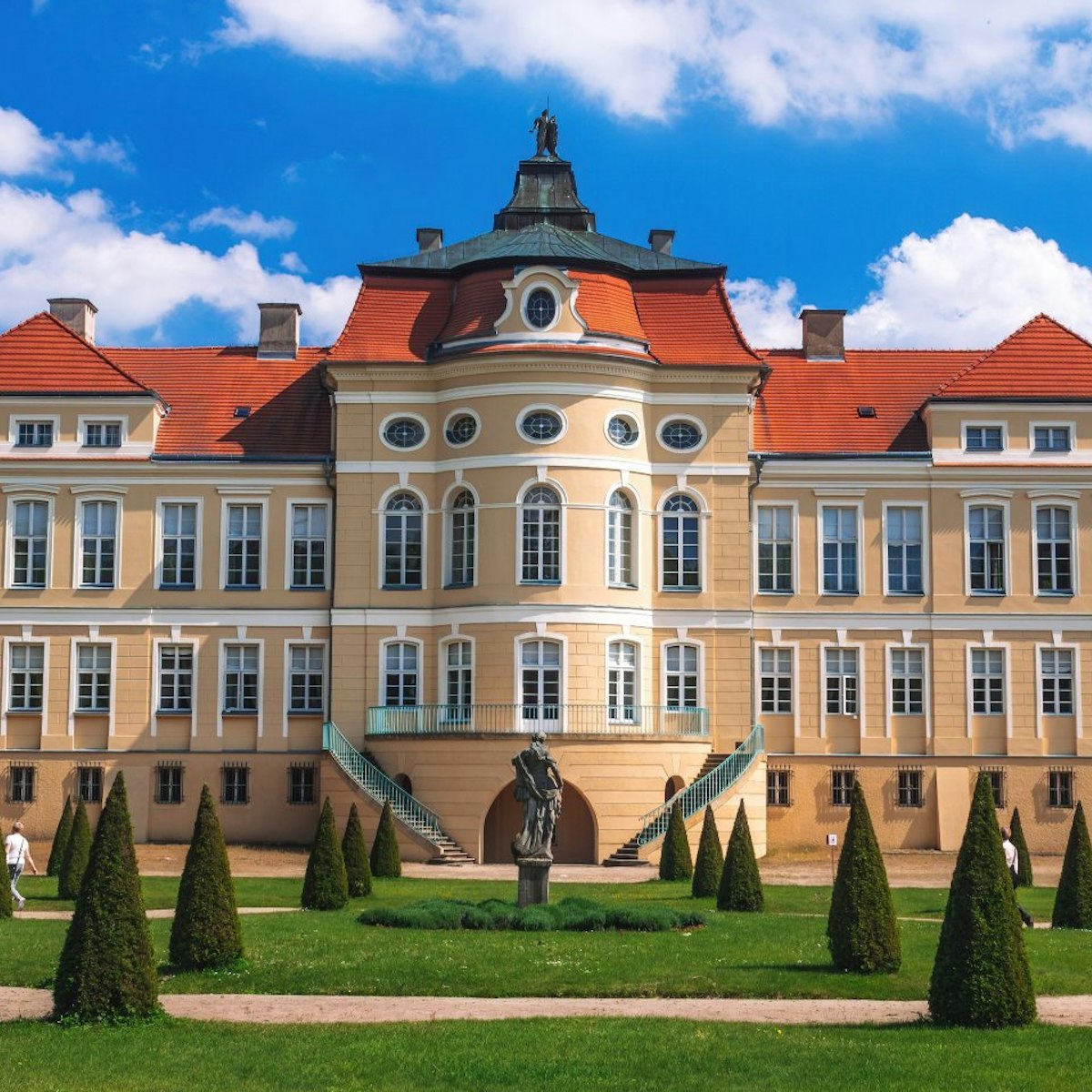Kórnik Castle's present-day appearance dates from the mid-19th century, when its owner, Tytus Działyński, gave the castle an outlandish mock-Gothic character, partly based on a design by German architect Karl Friedrich Schinkel. The building now looks as though two halves of completely different castles were spliced together, perhaps by force, and provides interesting photos from varying angles.
Part of the castle is open as a museum. You can wander through its 19th-century interiors, dotted with items collected by the family.
The collection was expanded by Działyński’s son Jan and his nephew Władysław Zamoyski; the latter donated the castle and its contents to the state in 1924.
Its treasures are well presented in a surprisingly light-filled space, and include some intriguing pieces like elaborately designed furniture, medieval weaponry and crockery from past centuries. Its spectacular Moorish hall (clearly influenced by the Alhambra in Granada) on the 1st floor was created as a memorable setting for the display of armour and military accessories.
Sometimes in the high season special exhibits are set up in the museum, including copies made of valuable books, such as Copernicus’ masterwork, De Revolutionibus Orbium Coelestium (On the Revolutions of the Heavenly Spheres). The original is safely stored here in Kórnik Library, part of the Polish National Academy of Sciences.
A coach house on the opposite side of the road holds three London coaches, brought from Paris by Jan Działyński in 1856, and the Galeria Klaudynówka, a servants' house from 1791, sometimes has exhibitions on special topics.


